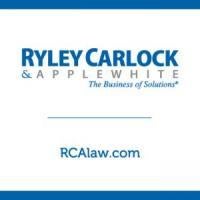On April 21, 2014, the U.S. Environmental Protection Agency (EPA) and the U.S. Army Corps of Engineers (Corps) jointly released a new Proposed Rule – Definition of Waters of the U.S. Under the Clean Water Act – that would amend the definition of "waters of the U.S." and expand the range of waters that fall under federal jurisdiction. The public comment period on the Proposed Rule ended on November 14, 2014. The EPA and Corps received more than 400,000 comments.1 The comments ranged from general support, general opposition, to industry and stake-holder specific support and opposition. It is currently anticipated that there will be final agency action on the Proposed Rule in April 2015, which could be the adoption of the Proposed Rule, adoption of a revision of the Proposed Rule, or abandonment of the Proposed Rule.2
Shortcoming #1: Rule could lead to significant regulatory burdens.
EPA and the Corps have repeatedly claimed the Proposed Rule is meant to provide "clarity" and reduce "uncertainty." However, as outlined herein, the Proposed Rule has had the opposite effect, causing members of the regulated community, particularly those in the agriculture industry, mining industry, and local governments, to have serious concerns that the Proposed Rule will lead to significant regulatory burdens by causing water features, such as canals and ditches with only remote and speculative hydrological connections to traditionally navigable and interstate waters, to become "jurisdictional" under the CWA for the first time.
Shortcoming #2: The definition of "tributary" under the proposed rule is overly broad and expands the jurisdiction of the CWA.
For the first time, EPA and the Army Corps have defined "tributary." As proposed, a water feature is a "tributary" if it is natural or man-made and:
-
it has a bed, bank, and ordinary high-water mark and flows into a traditionally navigable water, interstate water, a territorial sea, or any impoundment of the forgoing; or
-
it is a wetland, lake, or pond that contributes flow to a traditionally navigable water, interstate water, or a territorial sea.
As written, this Proposed Rule would allow the EPA, Corps, or a citizen using the Citizen Suit provision of the CWA, to assert that a lake, pond, other ornamental water feature, or drainage canal/wash is a tributary if during ephemeral flow conditions, i.e., flooding in response to a rain event, water could flow through such water features into a traditionally navigable water or interstates water, directly or through any other natural or man-made tributary or tributaries.
This definition does not require a "significant nexus" finding, rather, by rule, a "significant nexus" is assumed, and thus the burden is shifted from the EPA and Corps and placed onto the regulated community to demonstrate a particular water feature does not have a "significant nexus" to downstream interstate or traditionally navigable waters. This poses significant regulatory uncertainty, with the prospect of significant fines if the EPA or Corps determines that a particular water feature, i.e., anything from a stormwater drainage ditch to a lake on a golf course, is a "tributary" because it contributes flows, directly or indirectly, to an interstate or traditionally navigable water.
Shortcoming #3: The flood of concern has led to considerable legislative opposition.
Several pieces of legislation have been proposed to impede finalization of the Proposed Rule:
-
S. 2496 (introduced to the Senate in June 19, 2014): This would prohibit the Corps or EPA from finalizing the proposed "waters."
-
H.R. 5071 (referred to the House Subcommittee on Water Resources and Environment on July 11, 2014): This would require the agencies to withdraw the interpretive rule on agricultural exemptions and direct that all soil and water conservation practices shall be treated as "normal farming, ranching, and forestry" activities for purposes of CWA Section 404(f)(1)(A).
-
H.R. 4923, FY2015 Energy and Water Appropriations Act (passed by the House on July 10, 2014): This includes a provision that would bar the Corps from developing, adopting, implementing, or enforcing any change to rules or guidance pertaining to the CWA definition of "waters of the United States."
-
H.R. 5171, the FY2015 Interior and Environment Appropriations Act, funding EPA (approved by the House Appropriations Committee in July 2014): This contains a provision to similarly block funding for EPA to act on the "waters" rule.
-
H.R. 5078 (passed by the House on September 9, 2014): This would prohibit the Corps or EPA from finalizing the proposed "waters" rule or using that proposal or similar proposed rule or guidance as the basis of any rulemaking on the scope of CWA jurisdiction, it would require withdrawal of the interpretive rule, and also would direct the Corps and EPA to consult with state and local officials on CWA jurisdiction issues and develop a report on results of such consultation.
Recommendations to the Regulated Community and Predicted Outcome of Proposed Rule
Members of the regulated community can treat the Proposed Rule as a statement by EPA and the Corps of their intention to exercise their authority under the CWA on a going forward basis to include virtually any water feature with any sort of connection, directly or indirectly, to a traditionally navigable or interstate water. At this point, members of the regulated community should take steps to document the lack of significant hydrological connections between their water features and traditionally navigable or interstate waters; this information includes the number of flow events experienced by the water feature, the risk that pollutants could reach a traditionally navigable or interstate water, whether there are intervening conditions, such as natural or man-made breaks which would prohibit or inhibit pollutants from reaching a traditionally navigable or interstate water, and the distance between project/source to a traditionally navigable or interstate water, or watershed discharging into the same.
It is unclear what final agency action will take place in April 2015, but given the strong opposition to the Proposed Rule by stakeholders and members of Congress, the Proposed Rule is unlikely to become final in its current form.
1 See EPA Regulatory Development and Retrospective Review Tracker, http://yosemite.epa.gov/opei/RuleGate.nsf/byRIN/2040-AF30.





 />i
/>i
